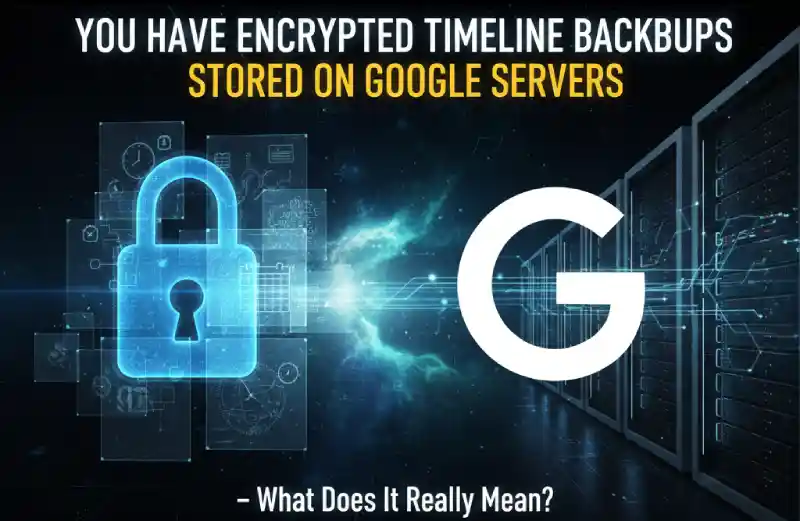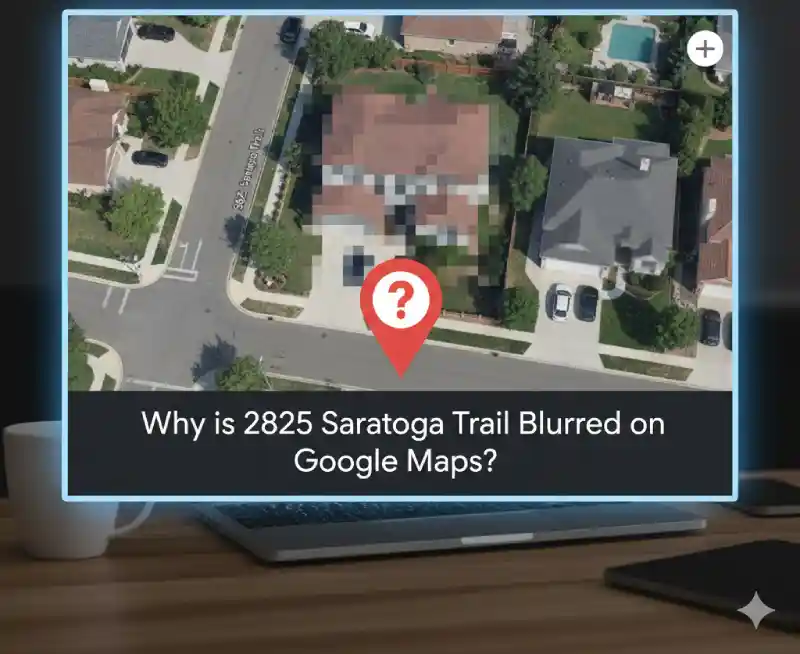Let me ask you a simple question: Do you know where your digital memories actually live?Most of us carry smartphones everywhere, snapping photos, navigating maps, texting friends, and checking emails. Behind the scenes, a lot of that data doesn’t just vanish into thin air it gets stored. And if you’re using Google services , chances are your activity timeline and backups are sitting safely well “safely” on Google’s servers.
But here’s the interesting twist: Google stores a lot of this information in encrypted form. You’ve probably seen this phrase: “Your data is stored securely with encryption.” Sounds comforting, right? But what does it really mean? Is it truly private? Can Google still see it? And why should you even care?
Let’s break it down step by step, no jargon overload, just real talk about how encrypted timeline backups work, why Google keeps them and what it means for you as a user in today’s digital world.
–1. First Things First: What Are Timeline Backups?
Okay, so before talking about encryption, let’s clear up what “timeline backups” even are.
- Timeline usually refers to your Google Maps timeline, a log of places you’ve visited, routes you’ve taken and sometimes even pictures attached to those trips.
- But it also connects to other services. Think Google Photos, Drive, Gmail, and even small settings like Wi-Fi passwords saved in your account.
Basically, timeline backups = a history of your activities, movements and preferences stored so that you can access them later.

Now, here’s the part people don’t realize: even if you delete an app or switch devices, a lot of this data is still sitting in Google’s servers, waiting for you. And yes, it’s usually encrypted.
2. What Does “Encrypted” Actually Mean?
Encryption sounds fancy, but it’s just a digital lock and key system. Imagine you keep your diary in a locked box. Even if someone steals the box, without the key, they can’t read your secrets. That’s encryption in simple terms.
Google uses something called AES (Advanced Encryption Standard) and TLS (Transport Layer Security) for protecting data:
- At Rest: When your data is sitting idle on Google’s servers, it’s encrypted.
- In Transit: When your data is traveling (say from your phone to Google’s cloud), it’s also encrypted.
So yes, your timeline backups are scrambled in a way that makes them unreadable to hackers—or at least that’s the promise.
Google Safety & Security: How We Keep Your Data Safe
(https://safety.google/security/)
3. Why Does Google Store Timeline Backups Anyway?
Now you might be thinking: Wait a second, why does Google even need all this stuff Well, there are a few reasons:
1. Convenience for you: Ever switched to a new phone and had everything just appear? That’s backups at work.
2. Personalization: Google loves tailoring ads and suggestions. Your location history tells them what restaurants to suggest, what traffic updates to give and so on.
3. Security: Some backups are for your own protection like account recovery if you get locked out.
4. Business model: Let’s be real. Google is an ad-driven company. Your timeline data helps them create more accurate ad profiles (though they say ads do not use certain sensitive info).
4. Can Google Still Read Encrypted Backups?
Here’s where it gets tricky. Just because something is encrypted doesn’t always mean it’s invisible even to the company holding it.
- Some backups are end-to-end encrypted (like passwords saved in Google Password Manager). Only you can unlock them.
- But a lot of timeline data, like Maps location history, is encrypted by Google but Google still holds the keys.
So technically, yes, they could access it. That doesn’t mean they’re spying on your trips to the grocery store but legally they can be required to hand over data to authorities if there’s a warrant.
5. A Bit of History: Why Encryption Became a Big Deal
Back in the early 2000s, companies did not talk much about encryption. But after big scandals like Edward Snowden’s revelations in 2013 it became a selling point. People wanted privacy and tech giants had to deliver.
- Apple went all in on end-to-end encryption for iMessage and FaceTime.
- Google expanded encryption in Gmail and Drive.
- WhatsApp adopted encryption across chats.
Now, storing your backups without encryption would look outdated and untrustworthy.

6. Risks and Concerns
Okay, so encryption sounds great. But let’s not pretend it’s perfect. Here are some of the real concerns:
- Google holds the keys: Unless it’s end-to-end encrypted, they can technically look.
- Hackers target accounts, not just servers: If someone gets your password, encryption does not matter.
- Legal access: Governments can request your data.
- Data permanence: Even if you delete something, backups may keep a copy for “safety” for a while.
So yeah, your data is secure, but “secure” doesn’t always equal “private.”
7. What You Can Do as a User
Here’s the good news: you’re not powerless. Google gives you options if you know where to look.
- Manage your activity: Go to [Google My Activity]
(https://myactivity.google.com/) and check what’s stored.
- Turn off Location History: If you don’t want Maps tracking you, you can disable it.
- Download and Delete: Use Google Takeout to grab your data, then delete what you don’t want on their servers.
- Enable extra security: Two-factor authentication (2FA) makes your account harder to hack.
It’s not about paranoia, it’s about awareness.
8. The Bigger Picture
At the end of the day, storing encrypted timeline backups is both a blessing and a curse.
- Blessing: Your memories, settings and data stay safe and accessible.
- Curse: You give up a slice of privacy since Google ultimately benefits from knowing your habits.
The truth? For most people, the convenience outweighs the risks. But if you are someone who really values privacy you’ll want to dig deeper into what’s being stored and how you can control it.
FAQs
What exactly are encrypted timeline backups?
They are your activity logs (like Maps history, device settings, photos) stored securely on Google’s servers.
Can Google read my encrypted backups?
Depends. Some are end-to-end encrypted (Google can’t read them) while others are encrypted but accessible to Google.
How do I see what’s backed up?
Visit [Google My Activity](https://myactivity.google.com/) or your account settings.
Can I delete my timeline backups?
Yes, you can delete location history and activity logs manually.
Is it safe to keep encrypted backups with Google?
Generally yes it’s safer than keeping everything only on your device. But if you’re highly privacy-conscious you’ll want to manage settings closely.
Conclusion
So, when you see that message “You have encrypted timeline backups stored on Google servers”, do not panic. It simply means Google is holding on to your data locked with encryption for your convenience and their ecosystem.
But here’s the key takeaway: encrypted doesn’t always mean private. Some data is fully locked down (only you can see it) while other backups are encrypted but accessible to Google if needed.
Like most things in the digital age, it’s a trade-off. You get convenience, but you also share control.



[…] into Talkspace’s numbers. Want to learn how mental pressure connects to digital stress? Read You Have Encrypted Timeline Backups Stored on Google Servers for a surprising look at tech and […]